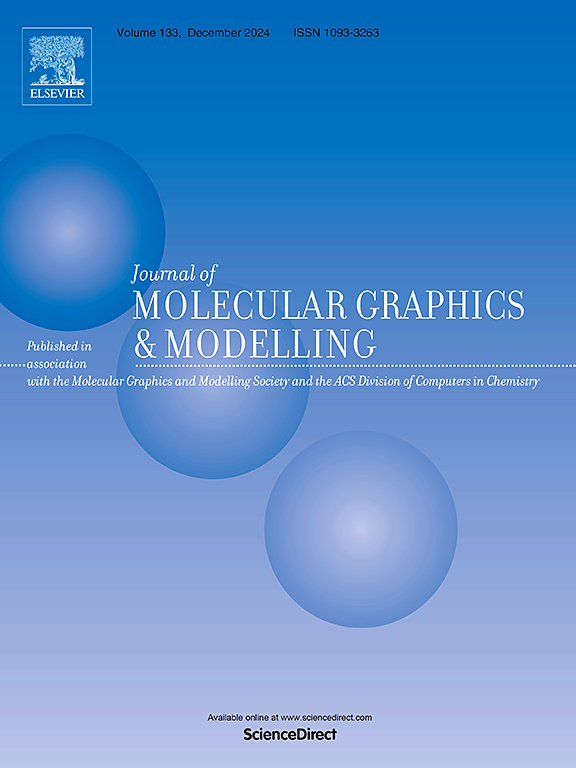Exploring the catalytic performance of ligand-functionalized Cu-BTC paddlewheels in carboxylative cyclization of propargyl alcohol with CO2: DFT and SISSO insights
IF 2.7
4区 生物学
Q2 BIOCHEMICAL RESEARCH METHODS
引用次数: 0
Abstract
The M06-L functional with the 6-31G(d,p) and SDD ECP basis sets, was used to investigate the structure and electronic properties of defective linker-coordinated paddlewheel complexes (Cu-BTC(L1–L4)) in the catalytic conversion of propargyl alcohol (PA) and CO2 into cyclic carbonate. Two catalytic processes are proposed based on the different PA adsorption modes at the Cu center. The reaction proceeds via adsorption by the hydroxyl group in two sequential steps: PA/CO2 activation and cyclization. This pathway is proposed as the dominant process in the Cu-BTC and Cu-BTC(L1–L3) systems. However, only Cu-BTC(L3) and Cu-BTC(L4), which exhibit stronger electron back-donation compared to the other systems, effectively promote the catalytic process via PA adsorption through its alkyne bond. In this latter mode, the reaction proceeds through three consecutive steps: PA/CO2 activation, ring closure, and H-transfer. Compared to pristine Cu-BTC, Cu-BTC(L3) and Cu-BTC(L4) are proposed as more efficient catalysts for the carboxylative cycloaddition of CO2 with PA. The rate-determining step for the reaction on these two systems is the PA/CO2 activation via the latter mechanism. This step has an activation free energy of 16.7 kcal/mol and 15.0 kcal/mol for the Cu-BTC(L3) and Cu-BTC(L4). The SISSO model reveals the role of the Cu center in activating PA and stabilizing the generated intermediate, thereby lowering the activation free energy for PA/CO2 activation.

求助全文
约1分钟内获得全文
求助全文
来源期刊

Journal of molecular graphics & modelling
生物-计算机:跨学科应用
CiteScore
5.50
自引率
6.90%
发文量
216
审稿时长
35 days
期刊介绍:
The Journal of Molecular Graphics and Modelling is devoted to the publication of papers on the uses of computers in theoretical investigations of molecular structure, function, interaction, and design. The scope of the journal includes all aspects of molecular modeling and computational chemistry, including, for instance, the study of molecular shape and properties, molecular simulations, protein and polymer engineering, drug design, materials design, structure-activity and structure-property relationships, database mining, and compound library design.
As a primary research journal, JMGM seeks to bring new knowledge to the attention of our readers. As such, submissions to the journal need to not only report results, but must draw conclusions and explore implications of the work presented. Authors are strongly encouraged to bear this in mind when preparing manuscripts. Routine applications of standard modelling approaches, providing only very limited new scientific insight, will not meet our criteria for publication. Reproducibility of reported calculations is an important issue. Wherever possible, we urge authors to enhance their papers with Supplementary Data, for example, in QSAR studies machine-readable versions of molecular datasets or in the development of new force-field parameters versions of the topology and force field parameter files. Routine applications of existing methods that do not lead to genuinely new insight will not be considered.
 求助内容:
求助内容: 应助结果提醒方式:
应助结果提醒方式:


